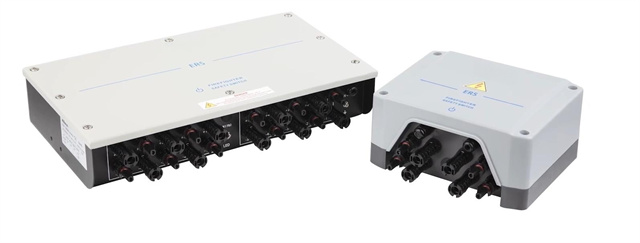Author:BLD Solar Energy SystemFROM:Solar System Converter Manufacturer TIME:2023-08-28
The solar industry has been experiencing rapid growth in recent years, with photovoltaic (PV) systems becoming more and more popular. However, as the number of PV installations increases, so does the need for efficient maintenance practices. One crucial aspect of maintenance is ensuring the safety of workers and emergency responders when dealing with PV systems. This is where simplified maintenance for string level rapid shutdown comes into play.

Before delving into the details of simplified maintenance, let's first understand why rapid shutdown is essential in the solar industry. When firefighters or other emergency personnel need to access a building with an active PV system, it's crucial to shut down the photovoltaic array quickly. Without rapid shutdown capabilities, there is a risk of electrocution and difficulty in extinguishing fires. Consequently, regulations and standards have been developed to ensure the safety of all parties involved.

Maintaining string level rapid shutdown can be a complex task. Traditional methods often require individual disconnection of strings, making it time-consuming and labor-intensive. Additionally, troubleshooting and diagnosing issues in a large-scale PV system can be challenging, especially if there are multiple strings involved. These challenges increase the risk of errors and delays in maintenance procedures, potentially compromising the overall safety of the system.

To address the challenges mentioned above, simplified maintenance solutions have been developed for string level rapid shutdown. These solutions aim to streamline the maintenance process, reduce human error, and improve efficiency. One approach involves the use of smart monitoring systems that provide real-time data on string status, allowing for easier identification of faults or malfunctions. This enables maintenance personnel to pinpoint issues quickly and take appropriate action without disconnecting each individual string.
Another solution is the implementation of automated shutdown systems that can be controlled remotely. With these systems, shut down the entire PV system or specific strings can be done with a few clicks, eliminating the need for manual disconnection and reducing downtime during maintenance. Additionally, these automated systems often provide detailed reports and logs, aiding in post-maintenance analysis and documentation.
In conclusion, simplified maintenance for string level rapid shutdown plays a crucial role in ensuring the safety and efficiency of solar PV systems. By implementing smart monitoring systems and automated shutdown technologies, maintenance procedures can be streamlined, reducing the risk of errors and improving overall system safety. As the solar industry continues to grow, it is essential to prioritize efficient and effective maintenance practices to support the industry's sustainability and longevity.
